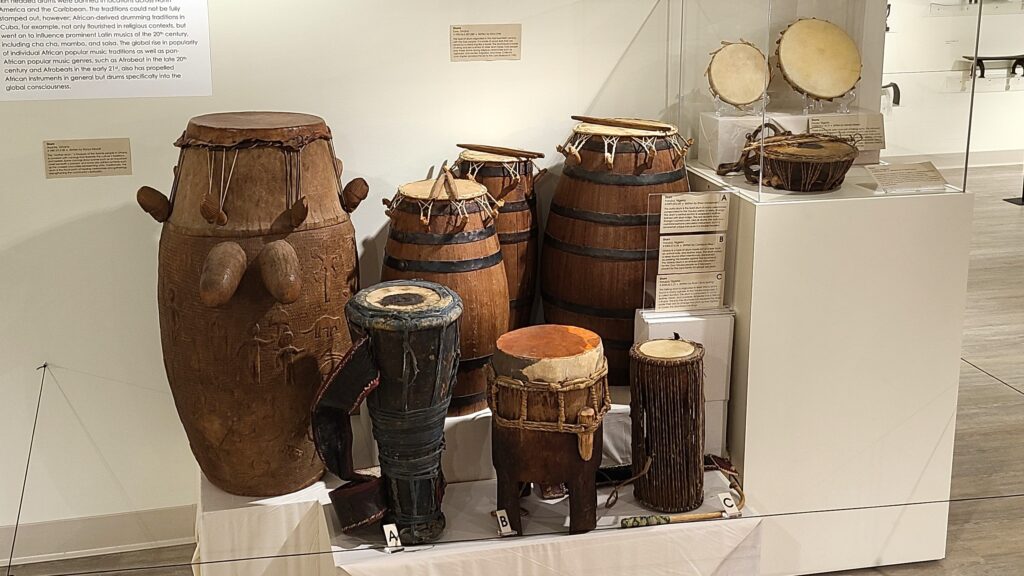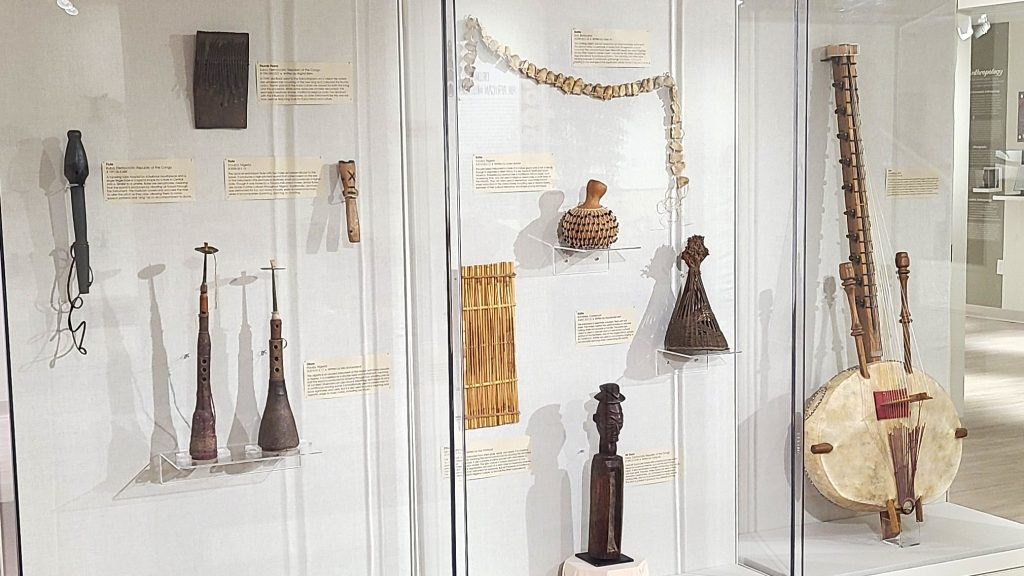African Instruments, American Identities
As African instruments and particularly drums have grown globally in popularity, it is not uncommon to find them in contexts largely unrelated to their original usage. The djembe, for example, is an important West African instrument. In its original social context, the instruments are crafted by hand and djembefola (djembe masters) must study for years to develop correct technique and receive their communities’ endorsement to perform on the instrument. In the 21st century, however, djembes are also mass-produced and sold on a global scale. Used for anything from drum circles to music therapy, the djembe represents well the potential for African instruments to become isolated from their original context.
However, in the past half century, there have also been concerted efforts to bring African music to the United States in a way that it remains connected to its communities of origin and communities in diaspora. Black pride activists have embraced African traditions such as music-making to build community in the United States and create a feeling of connectedness to Africa. Educators focusing on cultural diversification have embraced African instruments both to connect to Africa itself but also with Black artistic traditions in the Americas. Finally, African performer-educators continue to develop new ways to spread their traditions abroad, whether through online lessons or creating schools where foreigners can study African instrumental traditions.
Explore the Objects in this Section
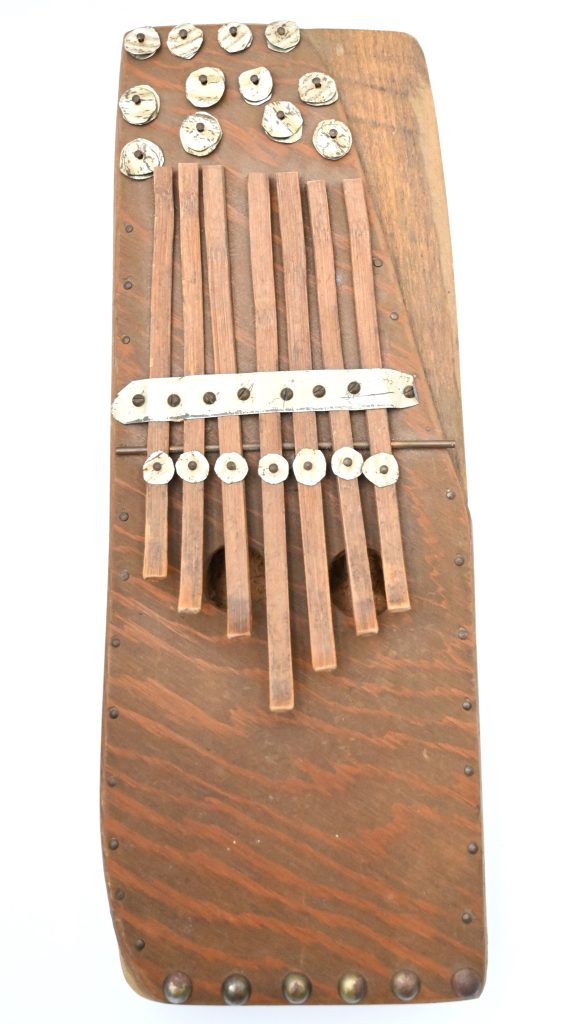
Thumb Piano
Shona, Mozambique
#2000.08.E.1 ● Written by Seth Neitlich
The mbira, commonly known as a thumb piano, is a popular instrument originating in Southeast Africa. They use a resonating chamber, such as a wooden box, stiffened leather, or even a large gourd, to amplify their delicate sound. The earliest historical evidence for mbiras goes back to approximately 3,000 years ago. In addition to music, they can be played to induce trances and are used as a pathway to the spiritual world. The kalimba, the westernized version of the mbira, has been popularized across the world, most notably by the band Earth, Wind and Fire.
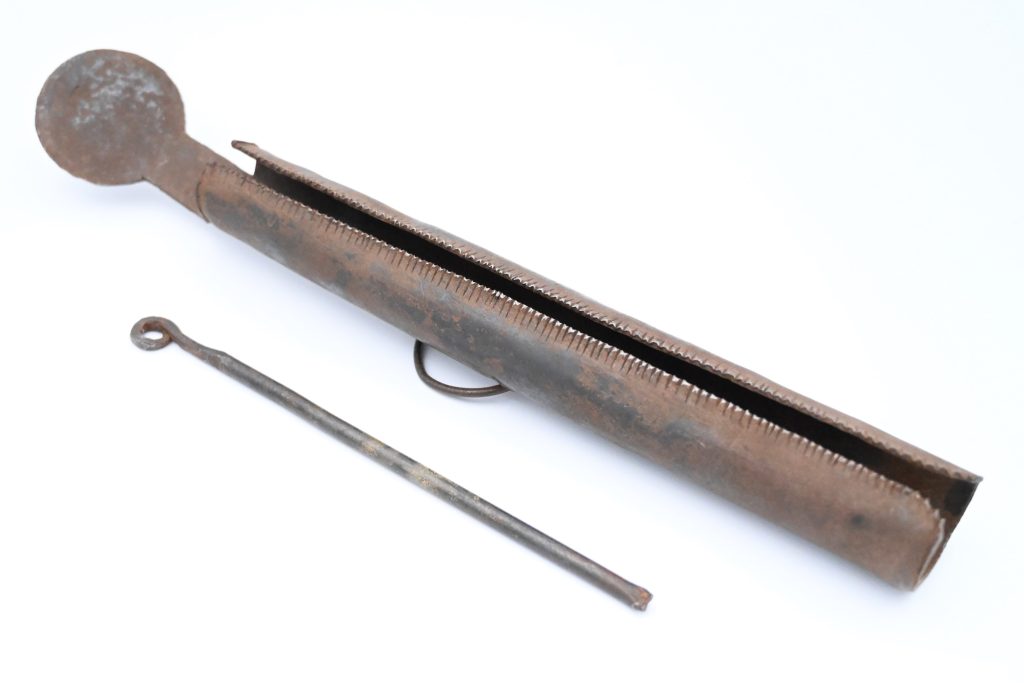
Gong
Senufo, Ivory Coast
#1998.04.E.45 ● Written by Esrom Ghirmay
The Senufo people live in parts of Ivory Coast, Mali, Burkina Faso, and Ghana. Their culture values farming, music, and craftsmanship. Iron gongs can have significant uses in religious and social activities, though this unique instrument was acquired by anthropologist Beverlye Hancock as an example of cultural heritage. Objects preserved in museums help safeguard the physical parts of African culture. Listen to this gong below.
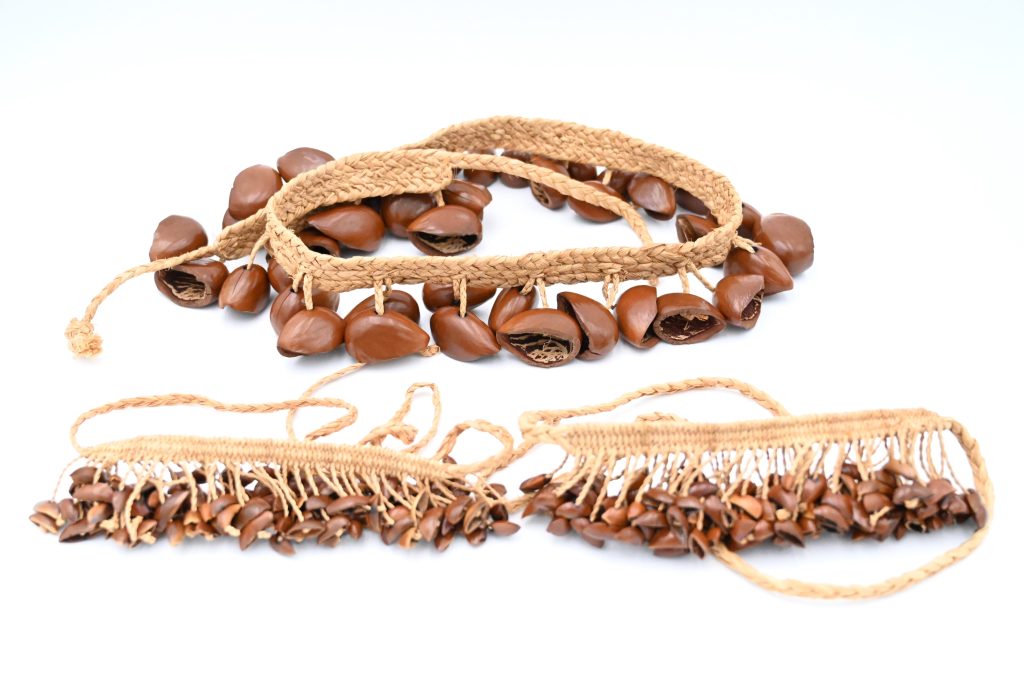
Rattles
Igbo, Nigeria
#2008.06.E.08,10-11 ● Written by Wednesday Smetak
These rattles are wearable dance regalia made of palm fiber and myot seeds. They are classified as idiophones, meaning that the sound is made by the whole instrument vibrating. They are worn around the torso and ankles of a dancer, sounding as the dancer moves and the seeds strike each other. Igbo dances tell dramatic stories of life and death by using the rattles to emphasize the movements of the dancers.
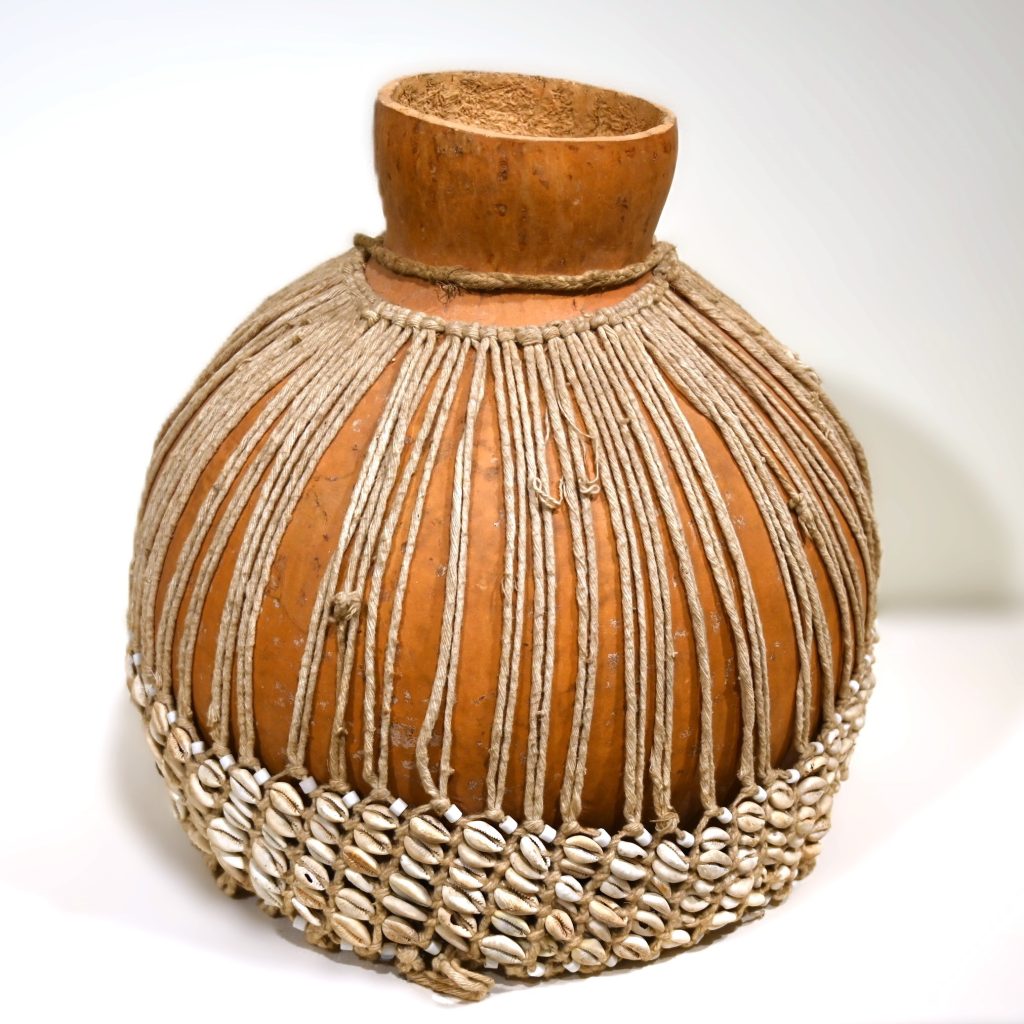
Rattle
Yoruba, Nigeria
#2008.06.E.03 ● Written by Alexandra Eliasek
This large, carved calabash gourd with a net of shells woven around it is called a shekere in the Yoruba language. It can be shaken, drummed, or thrown. The shekere is often played by women in religious settings. In the United States, Madeleine Yayodele Nelson popularized the instrument with her group The Women of the Calabash, and her instruments were used in “Fela!”, a Broadway show about the life of Nigerian musician Fela Kuti. This particular instrument was purchased in Nigeria by Winston-Salem doctor Stanley P. Bohrer.
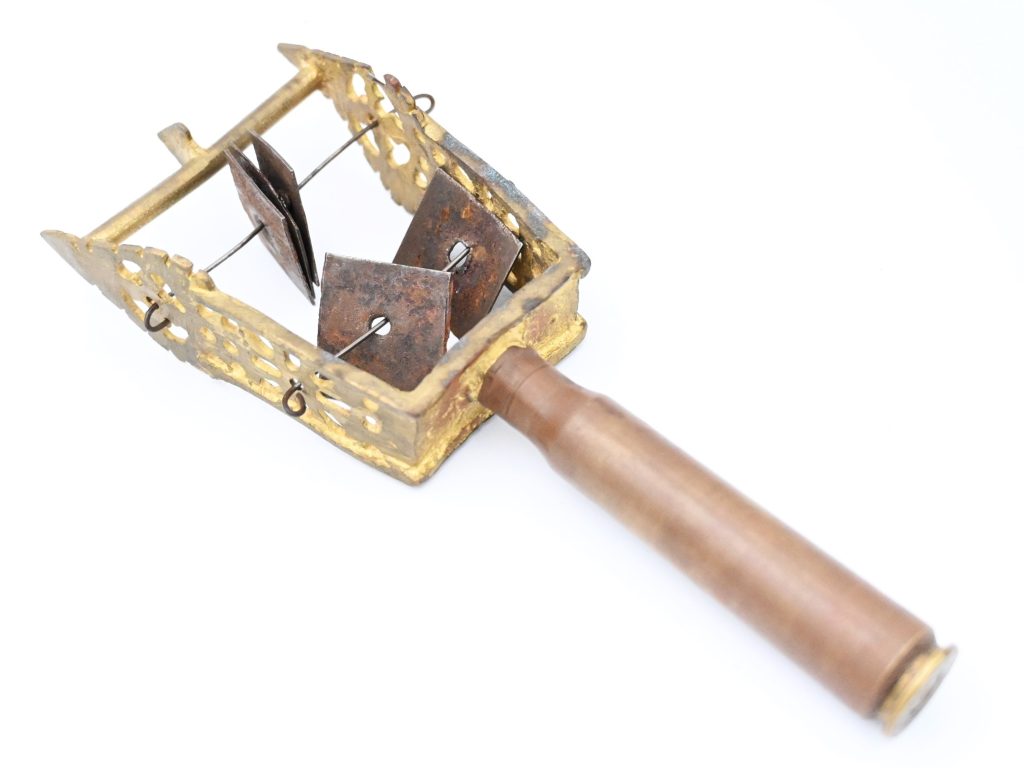
Rattle
Christian Orthodox, Ethiopia
#1996.17.E.3 ● Written by Jacob Kim
This sistrum is played during songs and ceremonies in the Ethiopian Orthodox Church. The instrument is made of copper alloy and wood. It makes a sound as the two rods of strung metal discs are rocked back and forth. It is often used during processions so that the movement of the player is in time with the sistrum’s rocking.


